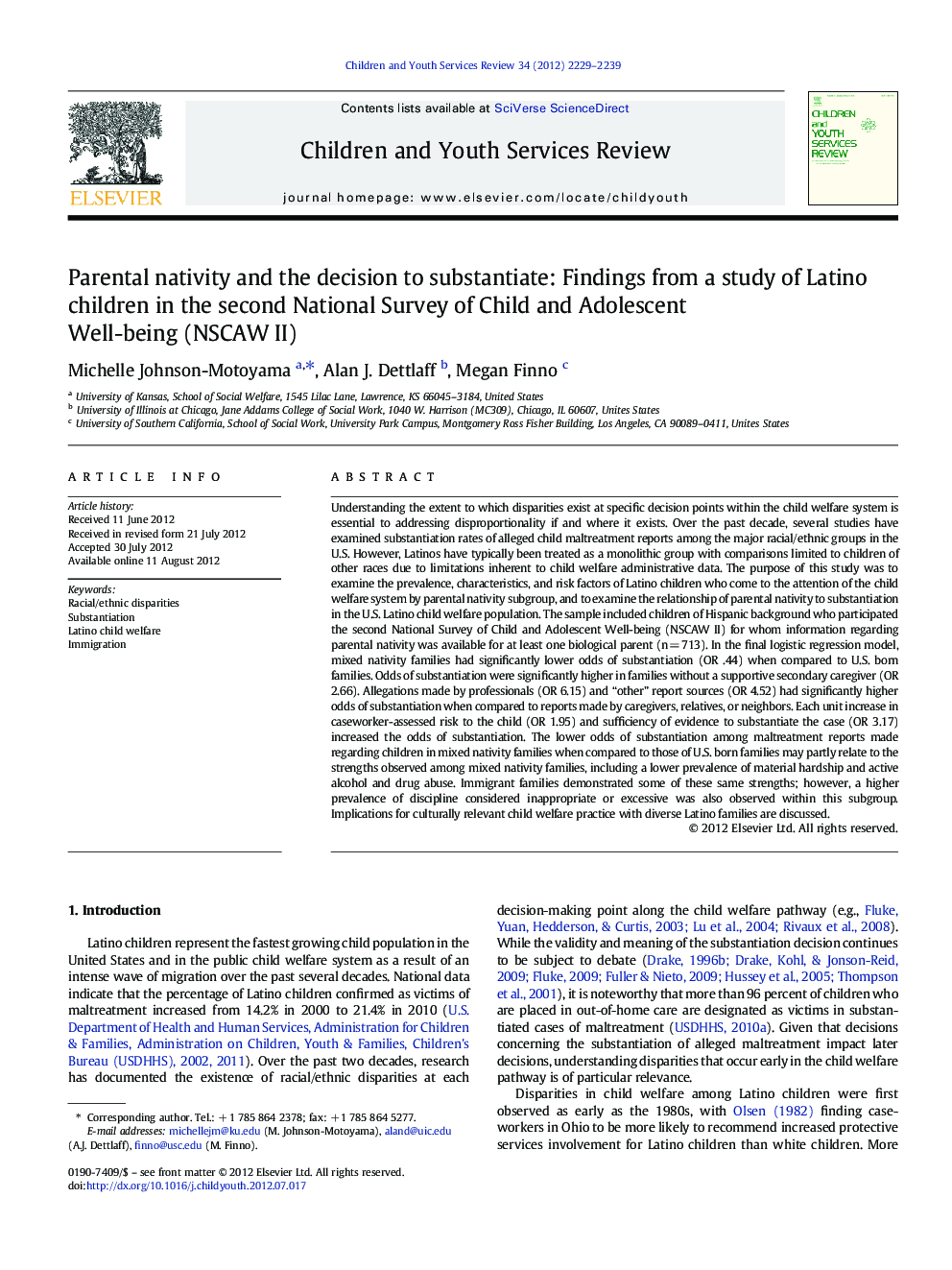| Article ID | Journal | Published Year | Pages | File Type |
|---|---|---|---|---|
| 346661 | Children and Youth Services Review | 2012 | 11 Pages |
Understanding the extent to which disparities exist at specific decision points within the child welfare system is essential to addressing disproportionality if and where it exists. Over the past decade, several studies have examined substantiation rates of alleged child maltreatment reports among the major racial/ethnic groups in the U.S. However, Latinos have typically been treated as a monolithic group with comparisons limited to children of other races due to limitations inherent to child welfare administrative data. The purpose of this study was to examine the prevalence, characteristics, and risk factors of Latino children who come to the attention of the child welfare system by parental nativity subgroup, and to examine the relationship of parental nativity to substantiation in the U.S. Latino child welfare population. The sample included children of Hispanic background who participated the second National Survey of Child and Adolescent Well-being (NSCAW II) for whom information regarding parental nativity was available for at least one biological parent (n = 713). In the final logistic regression model, mixed nativity families had significantly lower odds of substantiation (OR .44) when compared to U.S. born families. Odds of substantiation were significantly higher in families without a supportive secondary caregiver (OR 2.66). Allegations made by professionals (OR 6.15) and “other” report sources (OR 4.52) had significantly higher odds of substantiation when compared to reports made by caregivers, relatives, or neighbors. Each unit increase in caseworker-assessed risk to the child (OR 1.95) and sufficiency of evidence to substantiate the case (OR 3.17) increased the odds of substantiation. The lower odds of substantiation among maltreatment reports made regarding children in mixed nativity families when compared to those of U.S. born families may partly relate to the strengths observed among mixed nativity families, including a lower prevalence of material hardship and active alcohol and drug abuse. Immigrant families demonstrated some of these same strengths; however, a higher prevalence of discipline considered inappropriate or excessive was also observed within this subgroup. Implications for culturally relevant child welfare practice with diverse Latino families are discussed.
► We examine factors associated with substantiation among Latino children. ► We model families with caregivers of mixed nativity as a unique population. ► Cases involving mixed nativity parents had lower odds of substantiation. ► Cases may be substantiated differentially depending on level of caregiver support. ► Evidence plays the greatest role in substantiation among caseworker judgments.
